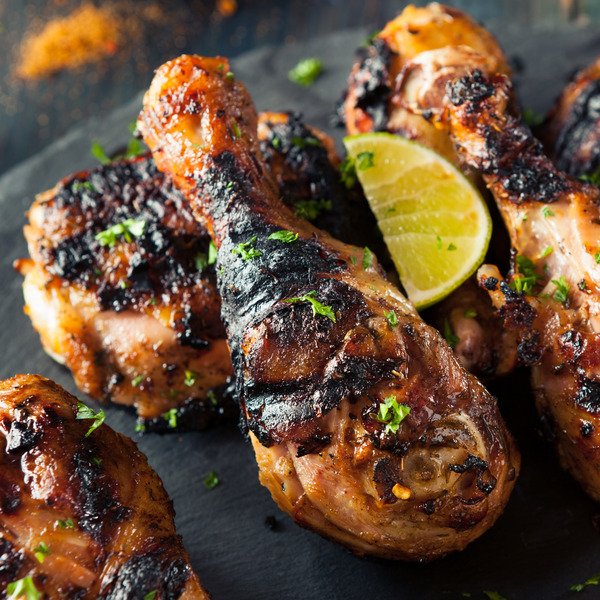Smoked, slow-cooked and simple are the name of the game when it comes to cowboy-inspired cuisine. Since the 1700s, this style of cooking has relied on a short list of versatile ingredients—beef, flour, potatoes, beans and onions—that can be transformed into biscuits, stews, fried steaks and more. On today’s menus, Dutch ovens and cast-iron skillets replicate the techniques used on the frontier, creating savory pies, casseroles and even desserts that pay homage to the chuck wagons of yore. The bold flavors of chicory, molasses and sorghum can be incorporated into marinades, batters and basting sauces that reflect a distinct period in America’s regional culinary heritage while appealing to the tastes of today’s patrons.
Flavor often takes the lead when we’re talking about a new restaurant, recipe, or product, but with Cowboy Cuisine, the technique is just as important. Roasted, simmered, grilled, smoked, braised, slow-cooked, or deep-fried—nothing is off limits when it comes to how we deliver flavor. But there is something about the aroma of smoke, the heat of the grill, the results of a slow braise that heightens the experience and allows for the introduction of new proteins. In fact, according to Technomic, nearly 25% of consumers say they’re eating cuts of beef that they didn’t eat a year ago, and three in 10 diners say the same of pork cuts.
Smoked comes to mind when we’re talking about cowboy cuisine. 69% of consumers say that like or love smoked foods. Open flame cooking has also come into favor over the last few years. Charred has grown 8% on menus in the last year, and is predicted to grow 22% by 2026.
At Ekstedt in Sweden, Chef Niklas Ekstedt is sharing his love for open flame cooking where gas ovens, grills or deep fryers will not be found. Everything that comes out of the kitchen is prepared using live flames in a fire pit. “We wanted to create a place where the emphasis was as much on the process as the end product.”
Others are sharing their expertise through favorite techniques. Chef Dave Swanson of Braise in Milwaukee, for instance, prefers braising to create a fall-off-the bone tender cut of meat, regarding it as “a pillar of the culinary world.” Praised barbecue pitmaster John Lewis knows a thing or two about technique and storytelling. Moving beyond his barbecue roots, Lewis brings the inspiration of his childhood in El Paso to the menu at Juan Luis along with his perfected technique for nixtamalizing corn for masa. Paul Virant, chef/owner of Vie and Vistro outside of Chicago and a partner of Perennial Virant, looks to smoking as a step in the creation of his Smoked Apple Butter which he recommends as an ingredient in a smoky aioli or as an addition to a bourbon cocktail.
Today’s consumer seeks flavor, yes, but flavor can be added through tried-and-true techniques and seasonings, just as it can be added with time and simple ingredients. We believe this is the heart of Cowboy Cuisine. Country-Fried Steak and Eggs, Pickled Onions, pot pies and biscuits are all perfect examples of simple ingredients prepared just right. Get inspired by this trend (and many others) by visiting our top trends and taking a look around.
MEnu Inspiration
Tender braised meats, smoky sauces and open-fire cooking bring the essence of cowboy cuisine trend to your menu. Get inspired by these recipes, featuring products from Custom Culinary®. Products from Custom Culinary® are ideal for creating simple one-pot fare, accented with rich sauces, marinades, glazes and gravies.
Chefs' Perspective
To truly grasp the concept of “Cowboy Cuisine” you’ve got to get your mind away from simply bison and beans cooked on an open campfire fueled by “buffalo chips”, washed down with coffee boiled over said fire with loose grinds. The reason, “Cowboy Cuisine” is much more than that. It’s popular and can be quite delicious, and dare I say elegant. Look at the Food Network’s “The Pioneer Woman” — lots of good cowboy cooking being celebrated there for sure.
When thinking of states that have a real cowboy culture, Oklahoma, New Mexico, Kansas and (of course) Texas immediately come to mind. Regarding three out of four of those states, BBQ becomes an obvious focus and justifiably so. Although Texas and Kansas think they get the spotlight for best BBQ, Oklahoma throws some AMAZING smoke of its own. Yet again though, cowboy cuisine is much more than just BBQ.
Diving further into it, the whole TexMex category translates nicely into cowboy cuisine offerings. The term "TexMex" first entered as a nickname for the Texas-Mexican Railway. The cuisine evolved during the 1950s in Mexican restaurants, whose popularity increased with the arrival of Mexican immigrants creating what we know as TexMex food, the mix of Northern Mexican peasant food with Texas farm and cowboy fare.
Everything from chili con queso, tortilla soup, and chili rellenos, which evolved into combination platters, overloaded with enchiladas, tacos, and fajitas, have now become the standards of TexMex menus. One of the most iconic TexMex dishes remains Texas-Style Chili. Chili was unknown in Mexico and derived from the use of beef in Texan cooking. This Texas classic doesn't include beans or tomatoes, only beef, homemade chili paste, and a few flavorings. It's what Texans call a "Bowl o' Red" and tastes intensely of its two main ingredients.
We hope that you take a chance to create some elegant cowboy menu offerings of your own soon. To help you get started, try our Beef Steak Pie. Remember, “Cowboy Cuisine” can be a lot of different things, but the one common denominator is that it’s always good.
*Products are customized; please contact your Custom Culinary® representative for more information.
SOURCES:
Datassential Flavor, May 2024
Datassential Menu Trends, May 2024
CRAVING MORE? CHECK OUT THESE SIMILAR POSTS

Fired Up Flavor
The combination of summer weather and the pivot to outdoor dining has many restaurants firing up the grill.